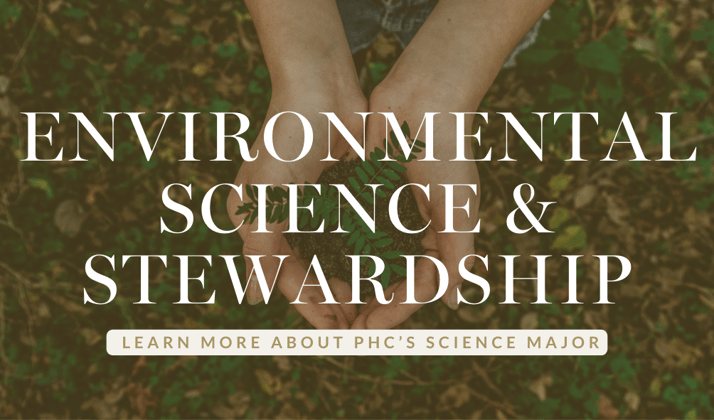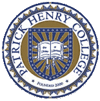.gif?width=714&height=599&name=NEW%20blog%20banner%20(20).gif)
Way down in the vial-filled basement of Red Hill, Dr. Rachel Ford begins her Tuesdays and Thursdays teaching General Chemistry II. “I have to get up at 4 a.m. in order to get out of the house at 6 and arrive on campus at 7 to set up,” Dr. Ford explained. “But at least I get to skip the traffic!”
If you asked Dr. Ford five years ago whether she would ever consider teaching chemistry, she would have given you a weird look and a firm “no.” Even as a child growing up in Jacksonville, Florida, she had her heart set on working as a veterinarian and playing with animals.
Her fascination began when she visited the library as an undergraduate student at the University of Florida. After she had spent eight hours reading organic chemistry books, she realized that she could not get enough of the subject.
“I love learning about why [chemical] reactions proceed the way they do,” she said. “I guess I just have to settle for my own personal petting zoo, even though I don’t have one yet.”
While she worked toward her bachelor’s degree in chemistry, Dr. Ford participated in a research group led by UF professor Ken Wagener, where she worked with cancer treatments. After graduating summa cum laude in 2014, she started doctoral studies at Caltech, where she specialized in water purification membranes.
.png?width=714&height=238&name=Rachel%20Ford%20(2).png)
Dr. Ford now works full-time in a post-graduate doctoral position—the scientist equivalent of a medical residency—with the National Institute of Standards and Technology (NIST), focusing primarily on pharmaceutical formulations. To research these formulations, she uses neutrons from nuclear reactors across the country to begin a process called neutron scattering.
Neutrons move like a wave, even though scientists have identified them as particles. Dr. Ford takes advantage of this behavior by using unique mirrors to aim a beam of neutrons directly at the sample she is currently testing. The neutron beam’s interaction with the sample then causes a certain shape to appear, called a scattering pattern. These patterns allow Dr. Ford to examine the chemical bonds on a uniquely intricate level to refine and preserve medications.
One such medication is insulin, a hormone and protein that the pancreas produces to allow energy from food into the body’s cells. Sometimes, beta cells attack the pancreas and stop it from producing insulin permanently. The resulting autoimmune illness is called type 1 diabetes, and those who suffer from it will die unless they continually pump insulin into their bodies. Those without insulin pumps inject themselves seven to ten times a day. This means that a vial of insulin is continually exposed to the outside environment and contamination.
Insulin vials always come with a preservative and surfactant substance, which prevents the molecules from changing their forms. However, even with preservatives and surfactants, insulin can still degrade. Using neutron scattering, Dr. Ford is researching how to produce the best quality and longer-lasting insulin in today’s market, helping those with diabetes to lead longer, happier lives.
“I shoot neutrons at things and see what happens,” Dr. Ford laughed. “That’s a good way to describe what I do.”
While Dr. Ford thoroughly enjoys her full-time work as a NIST chemist, she aspires to be a full-time chemistry professor at a Christian college after her post-graduate doctoral ends in the summer of 2025. But that dream came only recently.
“I grew up in a Christian home, but I wasn’t a fully committed Christian until I started living in Maryland,” Dr. Ford said. “A college friend of mine had told me that living for God is like being in a romantic relationship—if you love your boyfriend, you want to get to know everything about him. That really helped me realize just how far my life had deviated from God’s will, and I was baptized in 2022.”
“I didn’t ever want to teach at first,” she continued. “It wasn’t until I became a Christian that the Lord humbled my heart, and I wanted to help others learn.”
Although she had worked at the nearby NIST Center for Neutron Research in Gaithersburg, Md., Dr. Ford did not know about the school until last year. Her friend from Cascades Bible Church in Sterling, Va., mentioned it to her last year while she was looking for a teaching position.
“They just so happened to have an opening for an adjunct professor in chemistry,” she said, also noting that she loved how the ESS pre-med track matched perfectly with her interest in medical applications of chemistry.
Although Dr. Ford works longer hours every day except Sunday, she loves teaching at PHC, seeing it as an essential first step in her dream of teaching full-time at the college level.
“I started classes pretty nervous, but I’ve found it really invigorating,” she said. “There are times when I’m here for 14 hours straight and I’m not tired! It’s so nice because there’s a 12:1 student-to-faculty ratio, and the students are so forgiving.”
Ultimately, Dr. Ford aims to continue finding and sharing the joy of God’s ordered creation through chemistry. “Chemistry has given me a much bigger approach to how God has knit the world together,” she said. “The only reason you can put two ingredients in a pot, boil them, and have them produce the same result every time is that God created it that way.”
Reposted with permission from The Herald.
--
Patrick Henry College exists to glorify God by challenging the status quo in higher education, lifting high both faith and reason within a rigorous academic environment; thereby preserving for posterity the ideals behind the "noble experiment in ordered liberty" that is the foundation of America.

.png?width=800&height=400&name=PHC%20(1).png)





